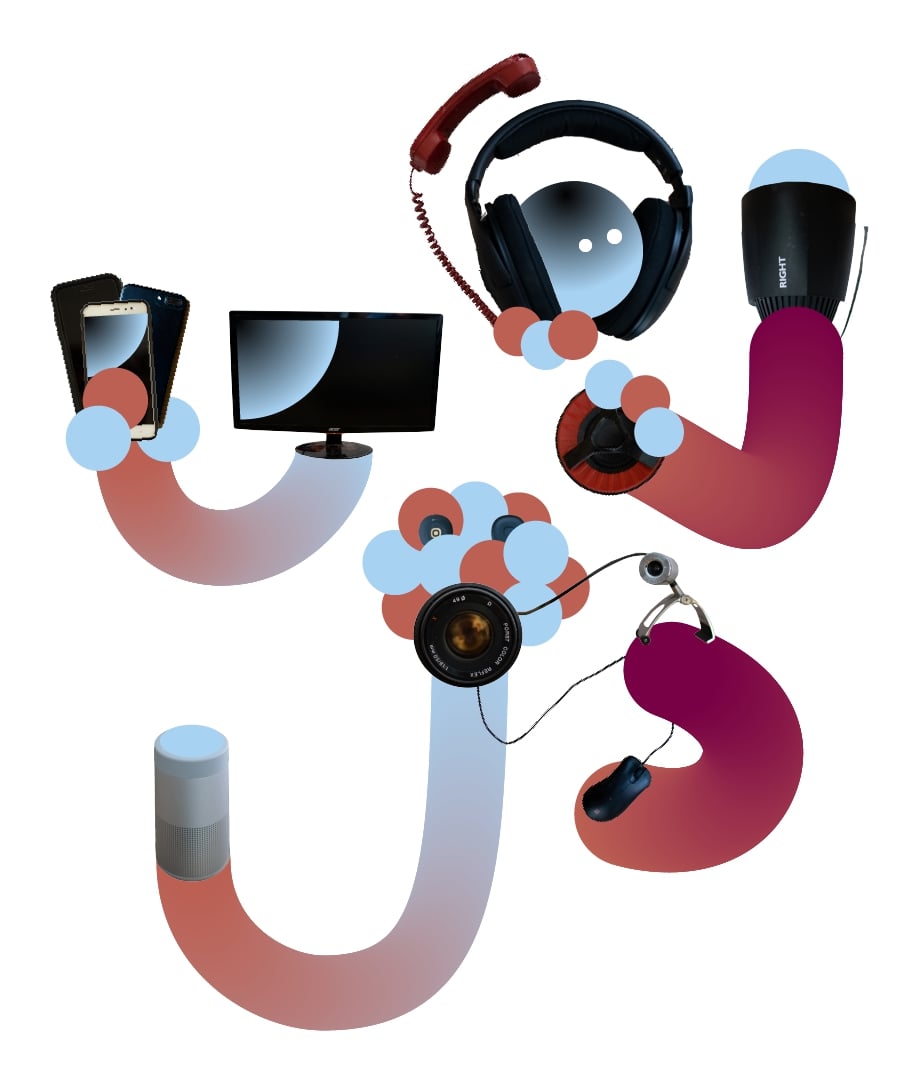 Anton Grabolle / Higher Photos of AI / Human-AI collaboration / Licenced by CC-BY 4.0
Anton Grabolle / Higher Photos of AI / Human-AI collaboration / Licenced by CC-BY 4.0
The AAAI Fall Symposium Collection came about in Arlington, USA, and comprised seven totally different symposia. One in all these, the tenth Synthetic Intelligence for Human-Robotic Interplay (AI-HRI) symposium was run as a hybrid in-person/on-line occasion, and we tuned in to the opening keynote, which was given by Patrícia Alves-Oliveira.
As a psychology scholar, Patrícia’s dream was to grow to be a therapist. Nonetheless, an internship, the place she encountered a robotic for the primary time, impressed her to alter her plans, and he or she determined to enter the sphere of human-robot interplay. Following a PhD within the subject, she labored as a postdoc, earlier than heading to trade as a designer within the Amazon Astro robotic crew.
Patrícia has labored on quite a lot of fascinating initiatives throughout her time in academia and in trade. Fascinated by the best way to design robots for particular consumer wants, and retaining the consumer on the forefront throughout the design course of, has been core to her work. She started by summarising three very totally different educational initiatives.
Creativity and robotics
The target of this mission was to design, fabricate, and consider robots as creativity-provoking instruments for youths. Patrícia created a social robotic named YOLO (or Your Personal Dwelling Object) that she designed to be child-proof (in different phrases, it may face up to being dropped and knocked over), with the purpose of making an attempt to assist youngsters discover their creativity throughout play. A machine studying algorithm learns the sample of play that the kid has and adapts the robotic behaviour accordingly. You may see the robotic in motion within the demo beneath:
FLEXI robotic
As a postdoc mission, Patrícia labored on constructing FLEXI, a social robotic embodiment equipment. This equipment consists of a robotic (with a face, and a torso with a display screen on the entrance), which will be customised, and an open-source end-user programming interface designed to be user-friendly. The customisation aspect signifies that it may be used for a lot of purposes. The crew has deployed FLEXI throughout three software situations: community-support, psychological well being, and training, with the purpose of assessing the flexibleness of the system. You may see the robotic in motion, in numerous situations, right here.
Social eating
This mission centred on a robotic arm for folks with impaired mobility. Such programs exist already for aiding folks with duties corresponding to consuming. Nonetheless, in a social context they will typically kind a barrier between the consumer and the remainder of the group. The concept behind this mission was to think about how such a robotic might be tailored to work properly in a social context, for instance, throughout a meal with household or mates. The crew interviewed folks with impaired mobility to evaluate their wants, and got here up with a set of design rules for creating robot-assisted feeding programs and an implementation information for future analysis on this space. You may learn the analysis paper on this mission right here.
Yow will discover out extra about these three initiatives, and the opposite initiatives that Patrícia has been concerned in, right here.
Astro robotic
Patrícia has lengthy been concerned about robots for the actual world, and the way this real-world expertise is aligned with the research of robots in academia and trade. She determined to depart academia and be a part of the Astro robotic programme, which she felt was an excellent alternative to work on a large-scale real-world robotic mission.
The Astro robotic is a house robotic designed to help with duties corresponding to monitoring your home, delivering small objects inside the house, recognising your pet, telling a narrative, or taking part in video games.
Patrícia took us by way of a typical day within the lifetime of a designer the place she all the time has in thoughts the larger image of what the crew is aiming for, in different phrases, what the perfect robotic, and its interactions with people, would seem like. Coupled to that, the method is ruled by core design tenets, such because the buyer wants, and non-negotiable core parts that the robotic ought to embody. When contemplating a selected aspect of the robotic design, for instance, the supply of an merchandise within the robotic tray, Patrícia makes use of storyboards to map out particulars of potential human-robot interactions. An vital facet of design considerations edge circumstances, which happen repeatedly in the actual world. Good design will take into account potential edge circumstances and incorporate methods to take care of them.
Patrícia closed by emphasising the significance of teamwork within the design course of, particularly, the necessity for interdisciplinary groups; by contemplating design from many alternative factors of view, the prospect of innovation is greater.
Yow will discover out extra concerning the Synthetic Intelligence for Human-Robotic Interplay (AI-HRI) symposium right here.
AIhub
is a non-profit devoted to connecting the AI group to the general public by offering free, high-quality info in AI.

AIhub
is a non-profit devoted to connecting the AI group to the general public by offering free, high-quality info in AI.

Lucy Smith
is Managing Editor for AIhub.

